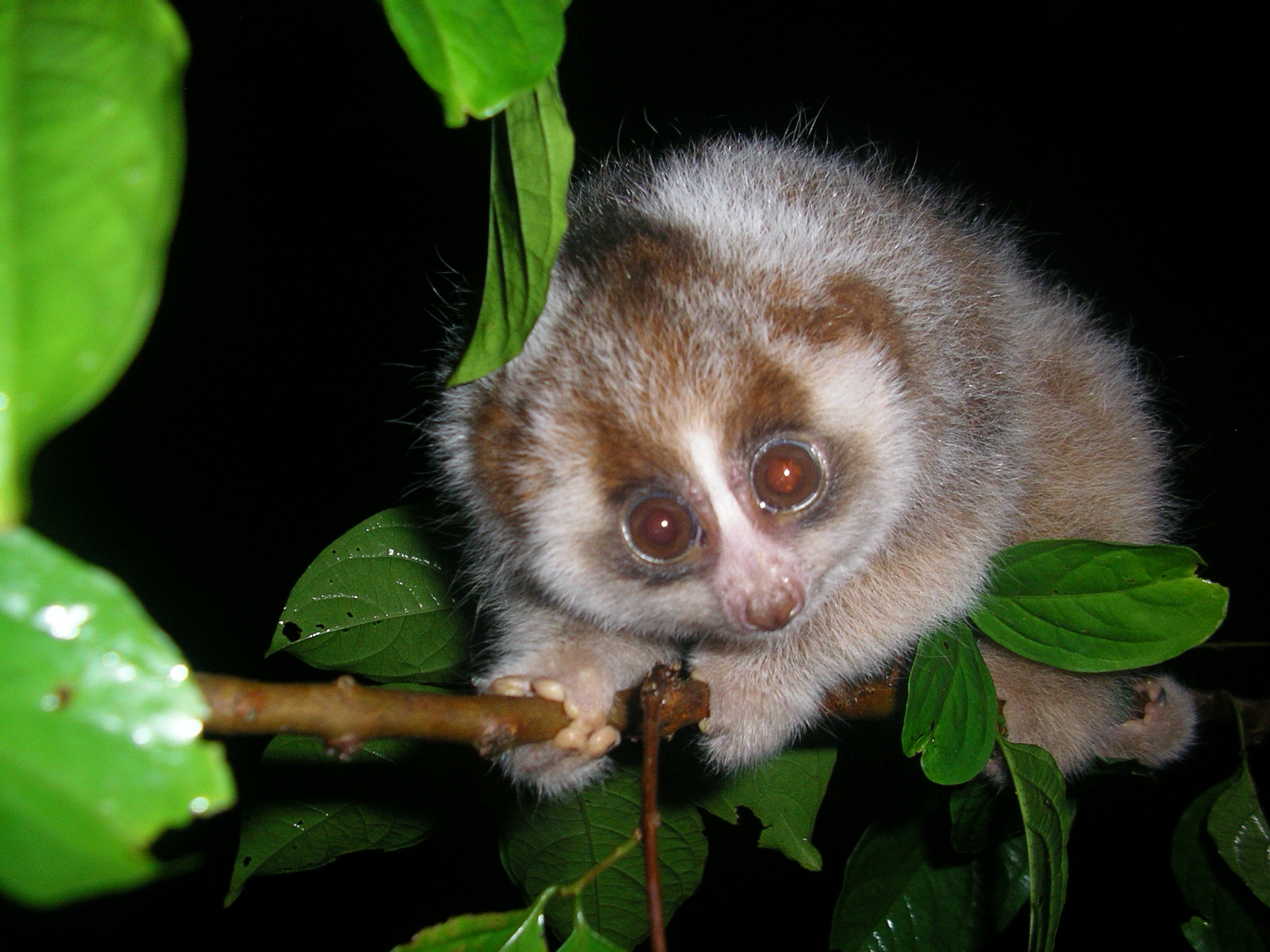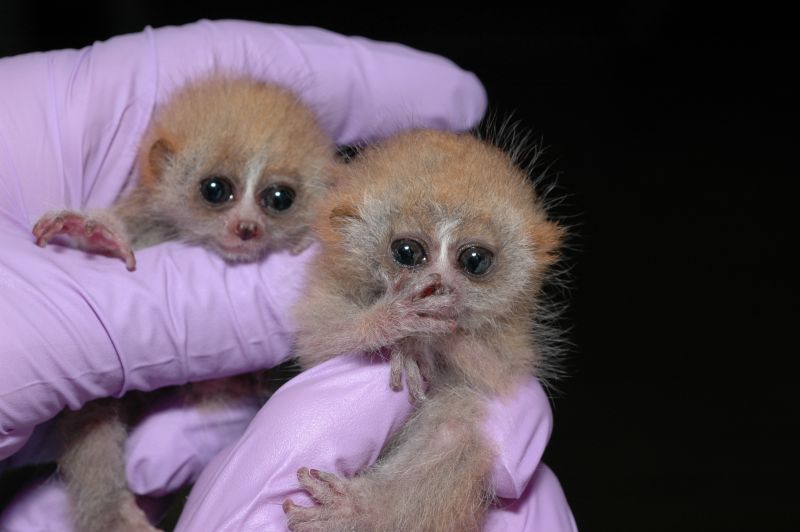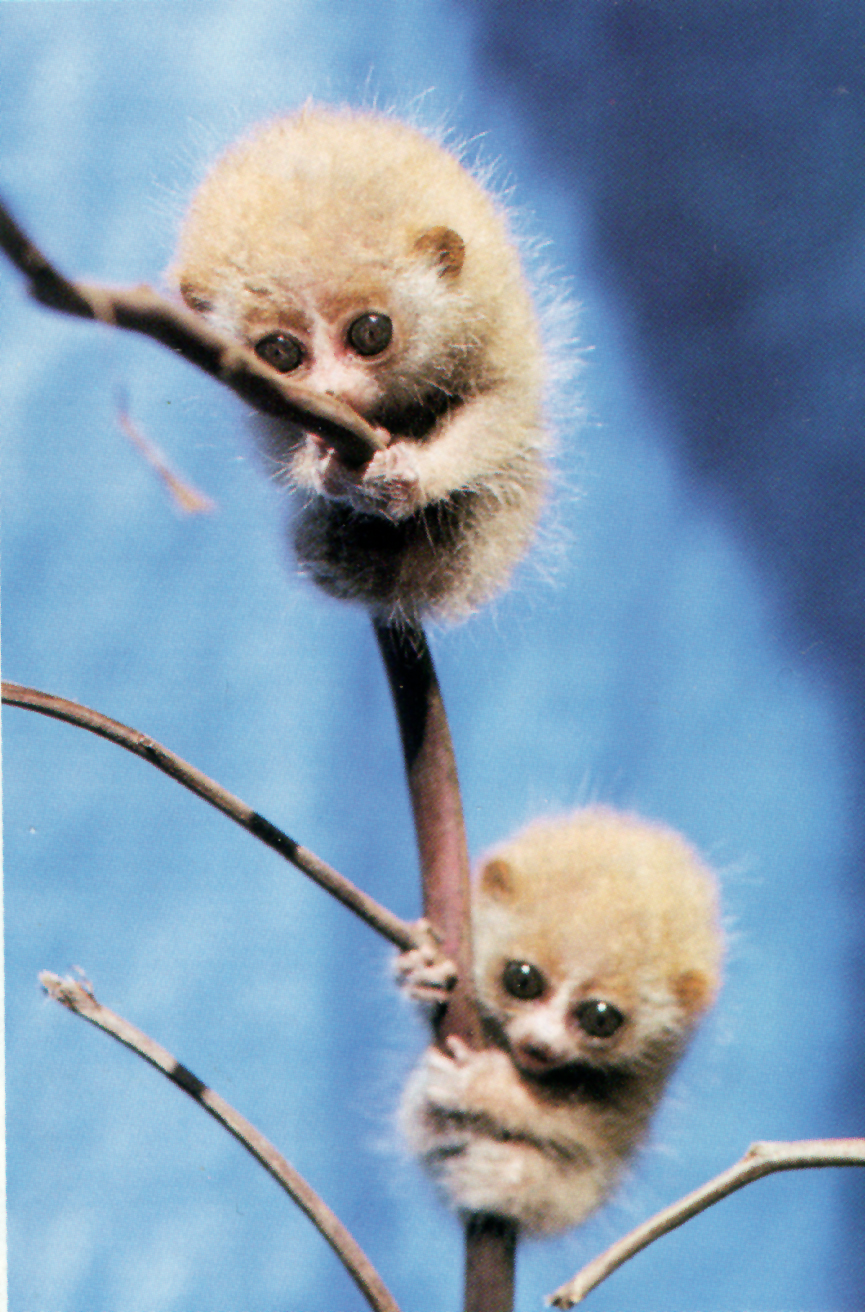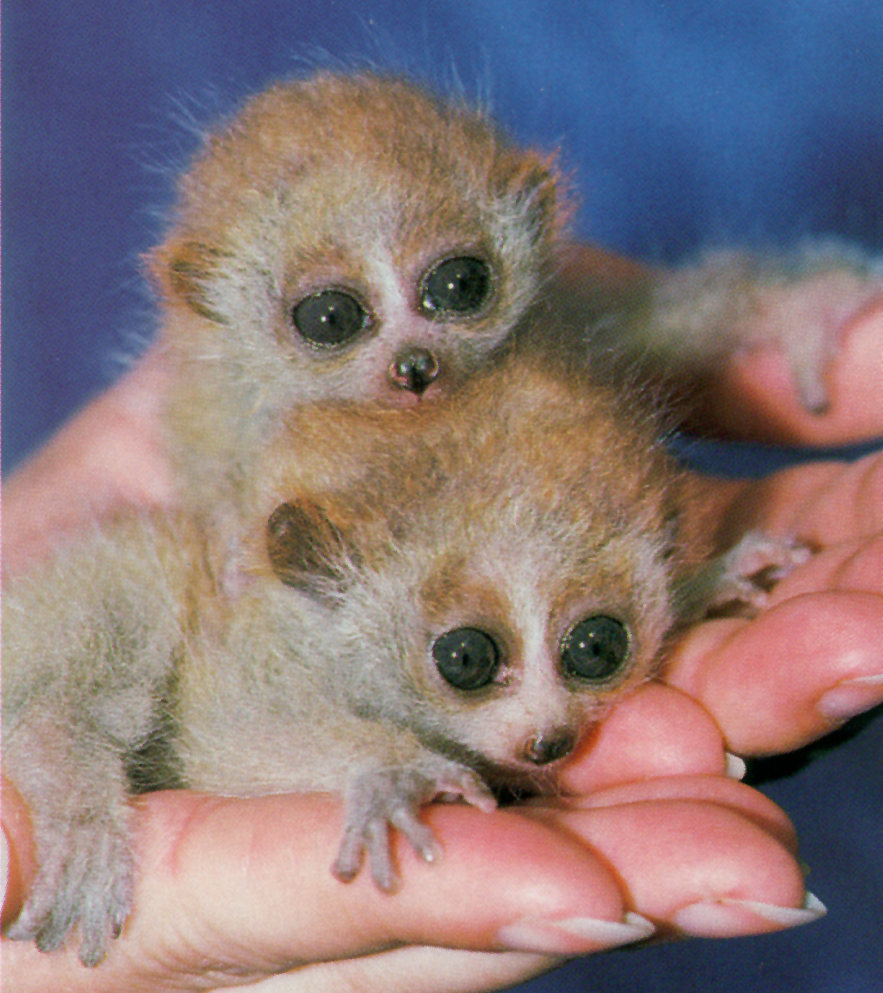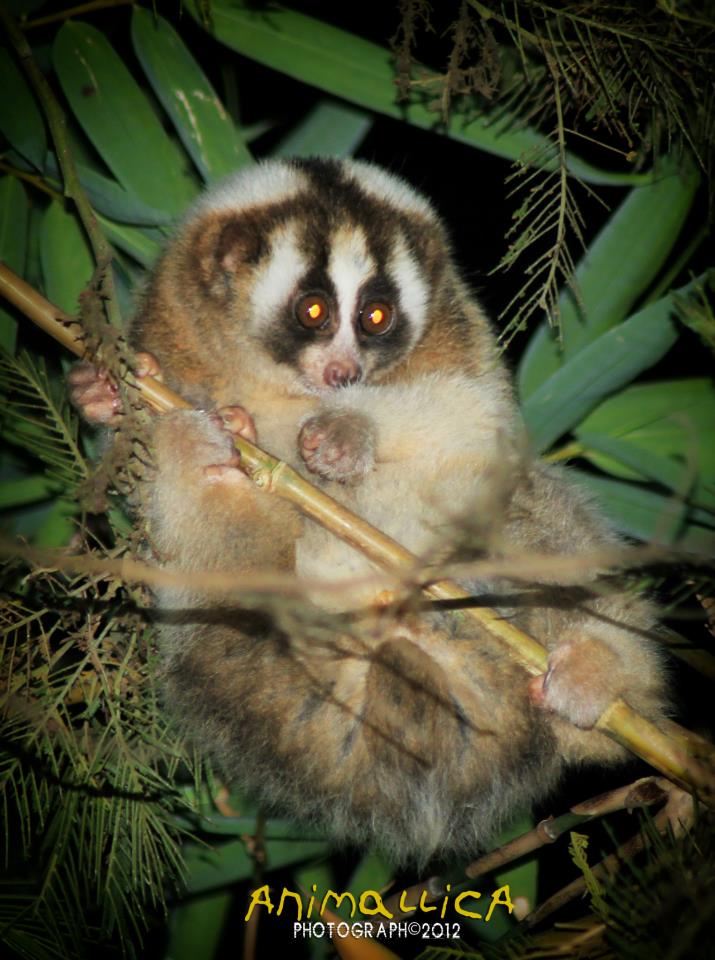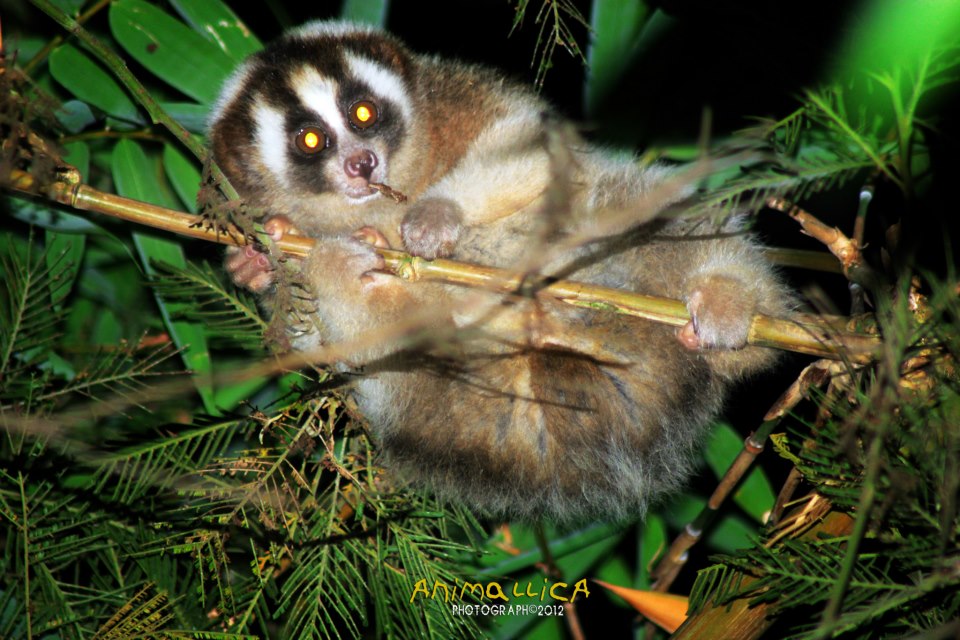Fireface Slow Loris Awareness Week Fact 2 is about slow loris reproduction! No one can resist the fluffball that is a loris infant, except maybe in Sri Lanka, where there is a saying that says the loris baby is SO ugly it can only be a gem to the eye’s of its mother! Click on the slideshow below!
But for the international pet trade, being a slow loris baby is no fun at all. But what is even more amazing is that slow lorises have amongst the SLOWEST LIFE HISTORY of all primates, based on their body size. Slow lorises become sexually mature between 14 and 18 months, depending on the species. They have about 190 days gestation (more than 6 months!), and give birth to 16-60 g babies (consider the adults are 400-2000 g!). They do not wean their babies until about 6 months. The young loris grows at this point and becomes quite big, and the mum has to keep pushing the needy baby away!
Ties that bind: Baby lorises have close bonds with their mums and other groups members and learn about their crazy diets and huge home ranges from them. The mother parks her baby, as feeding milk is very demanding. The baby looks kind of confused parked there, but it learns day by day, branch by branch, how to creep around its home range. The mum, papa, and some other lorises too can visit the baby and play without it throughout the night. They hang from two legs and chitter! (a VERY nice loris noise!!). The mother also scent marks important food sources like gum licks so the baby can find them – a bit like sending a text message! Even babies can make HUGE holes in trees when they gouge for gum – you would not that baby biting you…
Pet trade trauma: Babies are amongst the greatest victims of the pet trade, as they are just so helpless without their mums and they are developing over 18 months until their bones form fully. They thus suffer from diseases like osteomalacia and general weakeness and starvation as it is hard to imitate the mother’s milk.
What can you do? In habitat countries, lorises can be anywhere there are trees, really…so if you see a baby,leave it be. Its mum is just munching and she will be back for her treasure! Zoos are trying very had to breed loris babies to help with captive populations, as loris numbers in the wild dwindle. Adopt a weird and wonderful loris from a place like Bristol Zoo that has an adoption scheme! Realise that on YouTube, comments are ignorant that lorises have a long and healthy life in people’s flats. They are super social, very intelligent, and have strong bonds; and the babies you see in those videos it is sad to say have the slimmest chance to make it of them all. Help us keep loris babies in the forest where they belong!
Read the Science!
Reproduction in the slow loris (Nycticebus coucang)
Social dependence of infant slow lorises to learn diet

